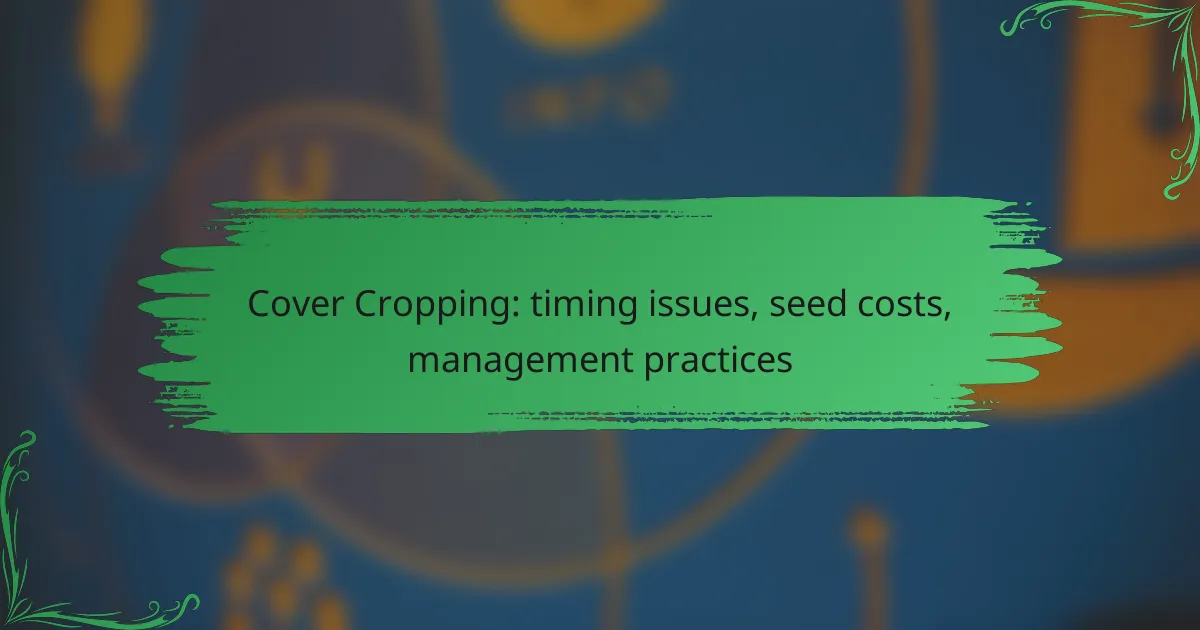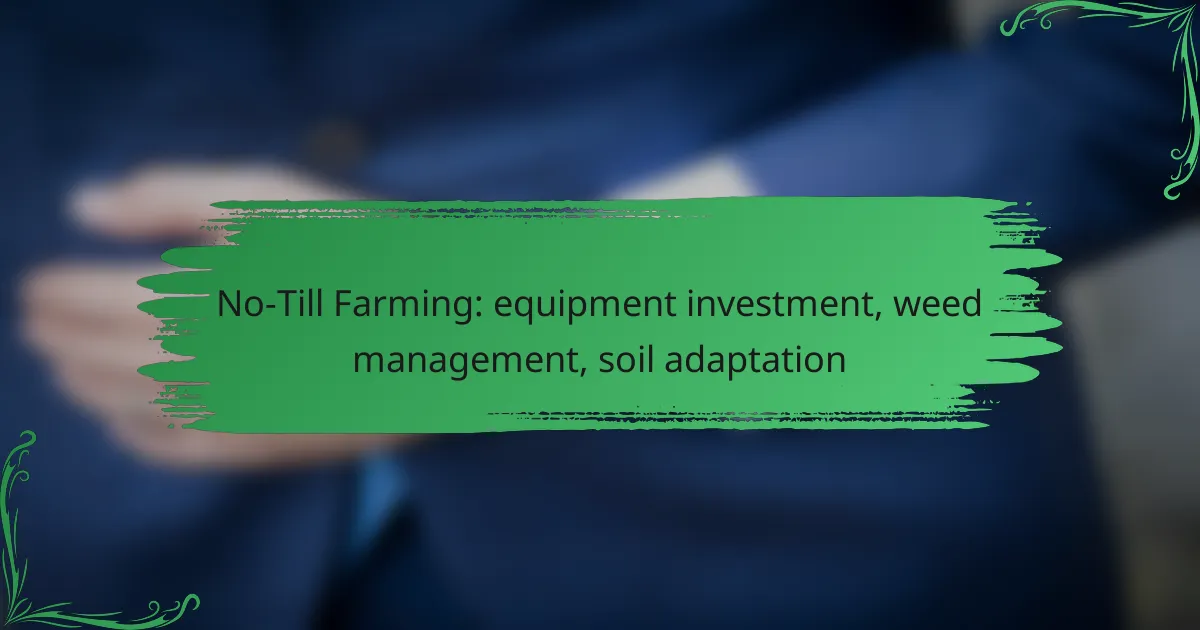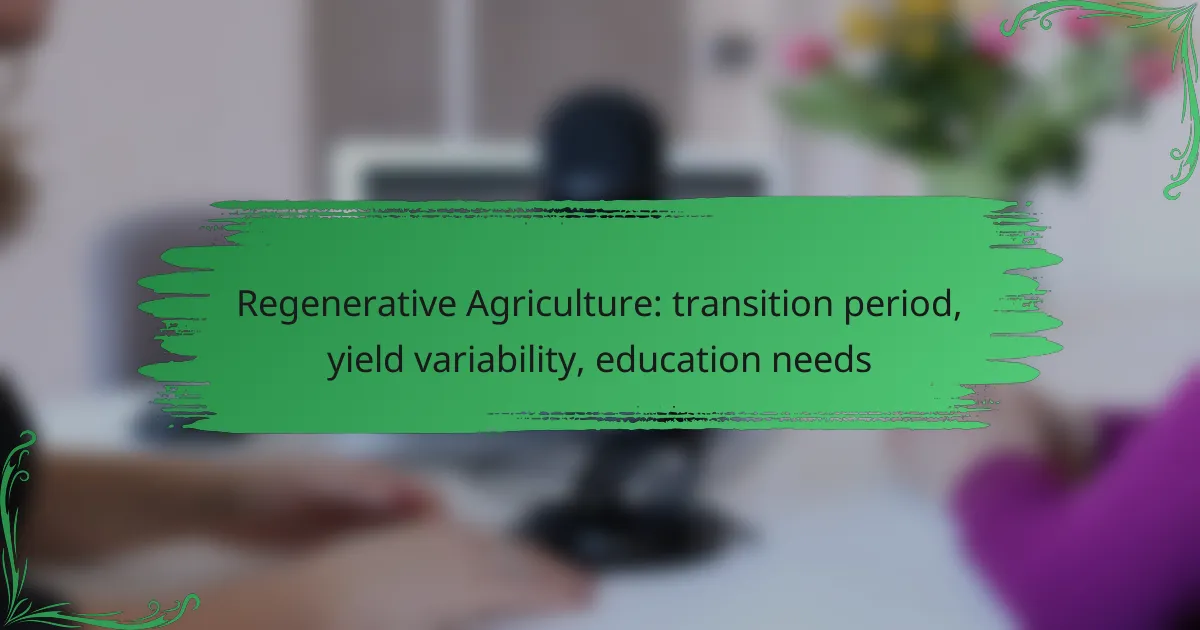Cover cropping is an essential practice for enhancing soil health, managing pests, and improving nutrient availability in agricultural systems. Timing the planting of cover crops, typically after cash crop harvests in the fall or before spring planting, is vital for maximizing their benefits. Additionally, understanding the costs associated with different cover crop seeds is crucial for farmers to effectively manage their budgets while reaping the advantages of this sustainable practice.

What are the best cover cropping practices in the Midwest?
The best cover cropping practices in the Midwest focus on enhancing soil health, managing pests, and improving nutrient availability. Selecting the right species and timing for planting are crucial for maximizing benefits while minimizing costs.
Legume cover crops for nitrogen fixation
Legume cover crops, such as clover and vetch, are excellent for nitrogen fixation, which enriches the soil with this essential nutrient. They can contribute significant amounts of nitrogen, often ranging from 30 to 150 pounds per acre, depending on the species and growth conditions.
To maximize nitrogen benefits, plant legumes in the fall or early spring before cash crops. Avoid planting them too late, as this can reduce their effectiveness. Incorporating them into the soil before flowering ensures optimal nitrogen release for subsequent crops.
Brassicas for pest management
Brassica cover crops, including radishes and mustards, are effective for pest management due to their ability to suppress weeds and disrupt pest life cycles. These crops can help reduce nematode populations and other soil-borne pests, enhancing overall crop health.
Timing is critical when using brassicas; they should be planted in late summer or early fall to establish before winter. Incorporating them into the soil before they bolt can maximize their pest management benefits while improving soil structure.
Mixing species for biodiversity
Mixing different cover crop species can enhance biodiversity, leading to improved soil health and resilience against pests and diseases. A diverse mix can include legumes, brassicas, and grasses, which together provide a range of benefits such as nutrient cycling and soil structure improvement.
When creating a mix, aim for a balance of 30-50% legumes, 20-30% brassicas, and the remainder in grasses. This combination can optimize nutrient uptake and provide a more robust cover crop system. Monitor growth and adjust species ratios based on local conditions and specific goals for best results.
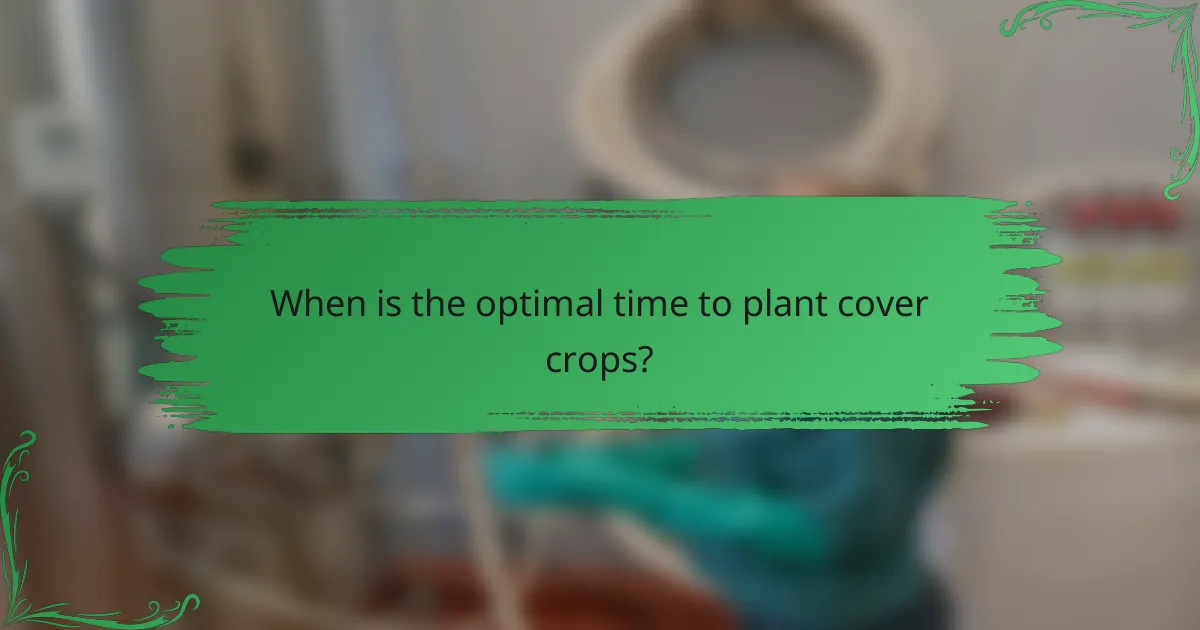
When is the optimal time to plant cover crops?
The optimal time to plant cover crops is typically right after harvesting cash crops in the fall or before planting cash crops in the spring. Timing is crucial to maximize the benefits of cover crops, such as soil health improvement and weed suppression.
Post-harvest planting in fall
Planting cover crops immediately after the fall harvest allows for effective soil coverage during the winter months. This timing helps prevent soil erosion and nutrient leaching, which can occur during heavy rains or snowmelt.
Common cover crops for fall planting include rye, clover, and vetch. These species establish quickly and can grow even in cooler temperatures, providing ground cover and organic matter as they decompose.
Farmers should aim to plant cover crops within a few weeks after harvest to ensure adequate growth before winter. A good rule of thumb is to plant by mid-September to early October, depending on the local climate.
Spring planting before cash crops
Spring planting of cover crops is typically done just before the main cash crops are sown. This strategy can enhance soil structure and nutrient availability, benefiting subsequent crops.
Farmers often use fast-growing species like buckwheat or peas for spring cover cropping. These plants can be sown as soon as the soil is workable, usually in late March to early April, allowing them to establish before cash crops are planted.
It is essential to terminate spring cover crops before they flower to prevent competition with cash crops. This can be achieved through mowing or using herbicides, ensuring that the benefits of the cover crop are maximized without hindering cash crop growth.
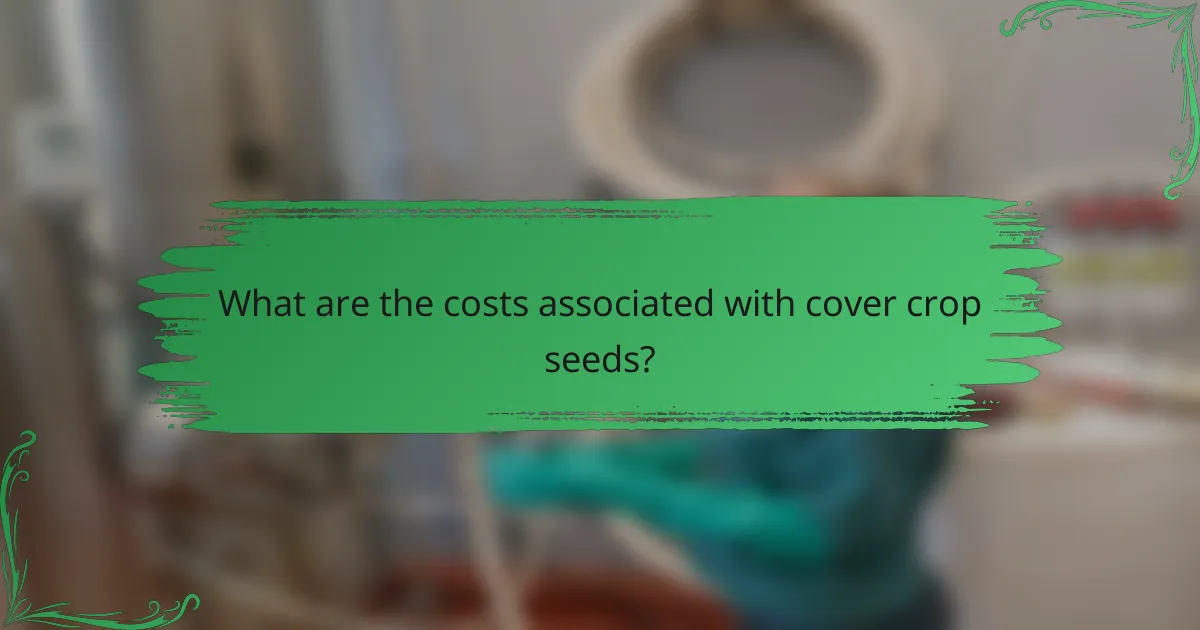
What are the costs associated with cover crop seeds?
The costs associated with cover crop seeds can vary significantly based on species, local availability, and planting methods. Understanding these costs is crucial for farmers aiming to maximize the benefits of cover cropping while managing their budgets effectively.
Average seed costs per acre
On average, cover crop seed costs can range from approximately $20 to $100 per acre, depending on the species chosen and the quantity purchased. Factors such as seed quality, organic certification, and local market conditions can influence these prices.
Farmers should consider bulk purchasing options or cooperative buying to reduce costs. Additionally, some regions may offer financial assistance or cost-sharing programs to encourage cover cropping, which can help offset seed expenses.
Cost comparison of different species
The cost of cover crop seeds varies widely among different species. For instance, legumes like clover and vetch may cost around $30 to $60 per acre, while grasses such as rye or oats can be less expensive, often falling between $20 and $40 per acre.
When selecting species, it’s essential to weigh the seed cost against the potential benefits, such as improved soil health and reduced erosion. Some farmers may opt for a mix of species, which can enhance biodiversity and provide multiple benefits, though this may increase initial seed costs.

How to manage cover crops effectively?
Effective management of cover crops involves careful planning regarding timing, seed selection, and maintenance practices. By understanding the specific needs of your soil and crops, you can enhance soil health, reduce erosion, and improve overall crop yields.
Termination methods for cover crops
Termination of cover crops is crucial for ensuring they do not compete with main crops. Common methods include mechanical termination through mowing or tilling, chemical termination using herbicides, and natural methods like frost or grazing by livestock. Each method has its advantages and should be chosen based on the specific crop system and environmental conditions.
For instance, mechanical methods can be effective but may require additional equipment and labor. Chemical methods can provide quick results but may involve costs and environmental considerations. Timing is essential; terminating cover crops too early or too late can impact the main crop’s performance.
Incorporating cover crops into crop rotation
Integrating cover crops into crop rotation enhances soil fertility and structure while suppressing weeds and pests. Selecting cover crops that complement the main crops, such as legumes for nitrogen fixation or deep-rooted species for soil aeration, can maximize benefits. Consideration of local climate and soil types is vital for successful integration.
For example, a farmer might plant a winter rye cover crop after harvesting corn, followed by soybeans in the spring. This rotation can improve soil health and yield potential. It’s important to monitor the growth and health of cover crops to ensure they provide the intended benefits without hindering the subsequent main crops.

What are the benefits of cover cropping?
Cover cropping offers numerous advantages, including improved soil health, enhanced water retention, and reduced erosion. These benefits contribute to sustainable farming practices and can lead to increased crop yields over time.
Improved soil health and structure
Cover crops enhance soil health by increasing organic matter and promoting beneficial microbial activity. This leads to better soil structure, which improves aeration and root penetration, ultimately supporting healthier plants.
Incorporating cover crops can help prevent soil compaction and erosion, particularly in areas prone to heavy rainfall. Farmers should consider using legumes, such as clover or vetch, which can fix nitrogen and enrich the soil for subsequent crops.
Enhanced water retention
Cover crops play a crucial role in improving water retention in the soil, which is vital for crop growth, especially in drier regions. Their root systems create channels that allow water to infiltrate more effectively, reducing runoff and promoting moisture availability.
To maximize water retention, select cover crops that are well-suited to your climate and soil type. For instance, deep-rooted species like radishes can help break up compacted layers, enhancing moisture absorption. Regularly monitor soil moisture levels to determine the effectiveness of your cover cropping strategy.
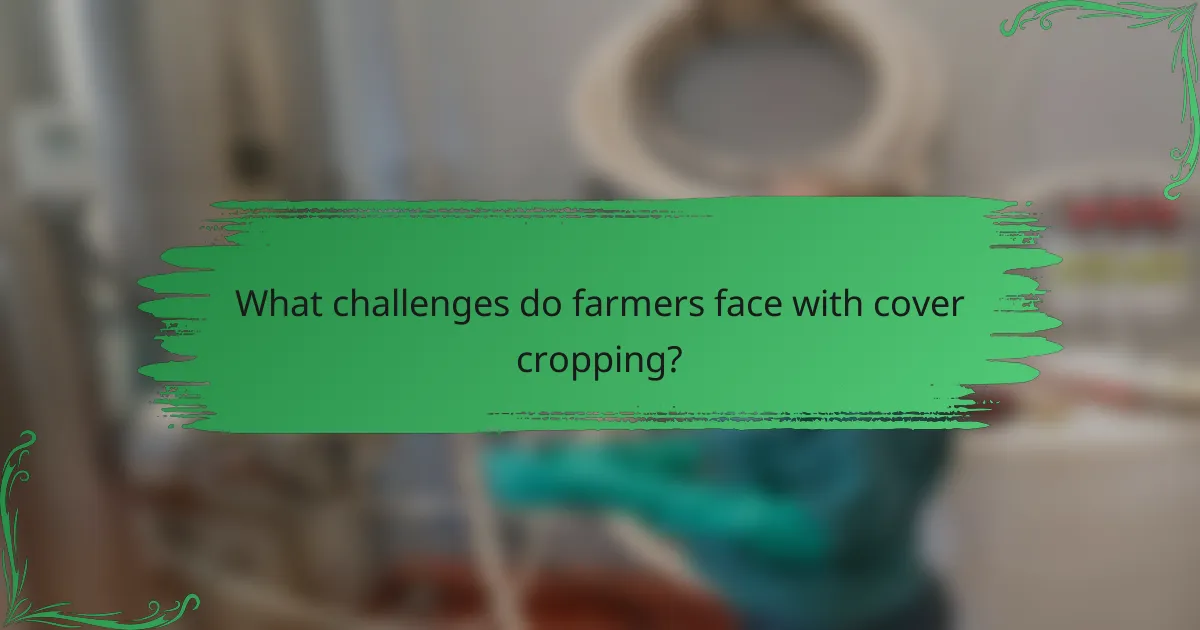
What challenges do farmers face with cover cropping?
Farmers encounter several challenges with cover cropping, including timing issues, seed costs, and management practices. These factors can significantly impact the effectiveness and adoption of cover crops in sustainable farming systems.
Weather-related planting issues
Weather conditions play a crucial role in the successful implementation of cover cropping. Unpredictable rainfall patterns, extreme temperatures, or late frosts can hinder timely planting and establishment of cover crops. Farmers must monitor weather forecasts closely and be prepared to adjust their planting schedules accordingly.
In regions with short growing seasons, such as parts of the northern United States, late planting can limit the benefits of cover crops. It is essential to select species that can thrive in local conditions and mature quickly to maximize soil health benefits.
Cost of implementation
The cost of implementing cover cropping can be a barrier for many farmers. Seed costs can vary widely depending on the species chosen, with some cover crop seeds costing several dollars per pound. Additionally, there may be expenses related to planting equipment and labor.
Farmers should consider the long-term benefits of cover cropping, such as improved soil health and reduced erosion, which can offset initial costs. Exploring cost-sharing programs or grants from agricultural organizations can also help alleviate financial burdens associated with cover cropping.

How do cover crops impact pest management?
Cover crops significantly influence pest management by enhancing soil health and disrupting pest life cycles. They can reduce pest populations and attract beneficial insects, creating a more balanced ecosystem in agricultural settings.
Reduction of pest populations
Cover crops can effectively reduce pest populations by interrupting their life cycles and providing habitats for natural predators. For instance, planting winter rye or clover can deter pests like aphids and root maggots by creating a less favorable environment for their development.
Additionally, cover crops can enhance soil structure and health, leading to improved resilience against pest infestations. Farmers should consider rotating different cover crops to maximize their effectiveness in pest suppression.
Attraction of beneficial insects
Cover crops play a crucial role in attracting beneficial insects, such as ladybugs and lacewings, which are natural predators of common agricultural pests. By providing nectar and pollen, these crops create habitats that support these beneficial species throughout the growing season.
To optimize the attraction of beneficial insects, choose cover crops that bloom at different times, ensuring a continuous food source. For example, planting buckwheat can attract pollinators and predatory insects, enhancing overall pest management strategies in the field.
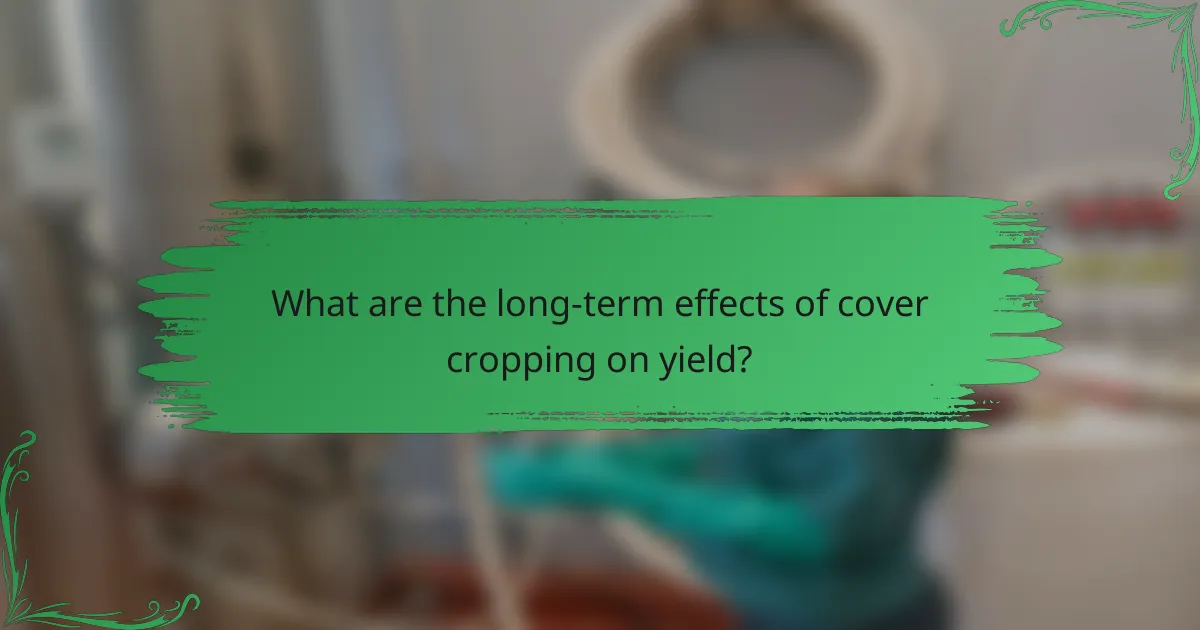
What are the long-term effects of cover cropping on yield?
Cover cropping can lead to sustained improvements in crop yield over time by enhancing soil health, reducing erosion, and increasing nutrient availability. These benefits often manifest after several growing seasons, making cover cropping a strategic investment for long-term agricultural productivity.
Yield improvements over multiple seasons
Implementing cover crops can result in yield improvements that accumulate over multiple seasons. Farmers often observe that soil structure and fertility enhance gradually, leading to better water retention and nutrient cycling. This can translate to yield increases of 10-20% over time, depending on the specific crops used and local conditions.
Different cover crops, such as legumes or grasses, can provide varying benefits. For instance, legumes fix nitrogen in the soil, which can reduce the need for synthetic fertilizers, while deep-rooted cover crops can improve soil aeration and structure. Choosing the right cover crop mix is crucial for maximizing these long-term yield benefits.
To optimize the effects of cover cropping, farmers should consider factors such as crop rotation, local climate, and soil type. Regular soil testing can help determine nutrient levels and inform decisions on which cover crops to plant. Avoiding monoculture and diversifying cover crops can further enhance resilience and productivity in the long run.
